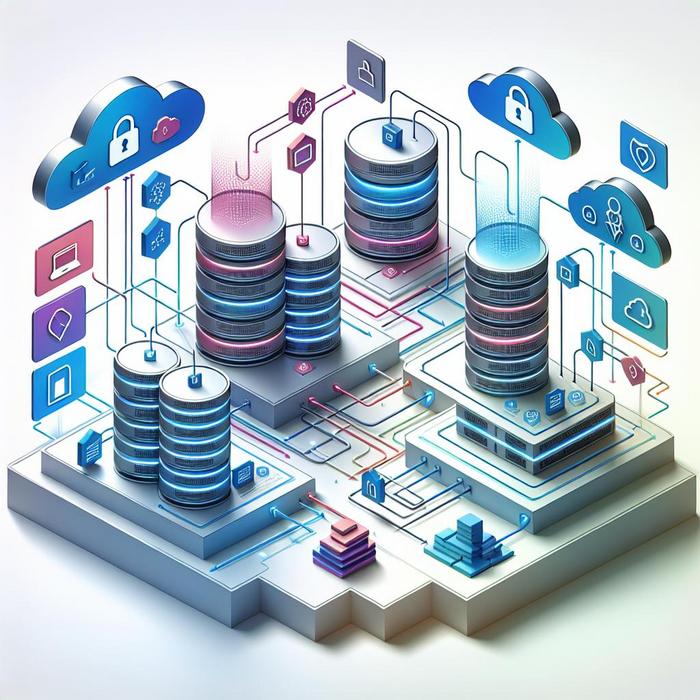Table of Contents Hide
Top Data Observability Tools Ranked by Gartner
 8 MIN. READING
8 MIN. READING
Reducing Data Provisioning Bottlenecks
How can organizations streamline data access for development and testing without compromising security or performance? Providing realistic data subsets for development and testing is crucial but often fraught with challenges. Traditional methods can be slow, resource-intensive, and create security vulnerabilities. Database virtualization offers a compelling alternative. By creating a virtualized layer, teams can access the data they need quickly and efficiently, without the overhead of copying and managing physical copies. This approach greatly reduces data provisioning bottlenecks, accelerating development cycles and time to market. Gartner’s insights into data management trends further emphasize the growing importance of streamlined data access for agile development. Want to dive deeper into automating compliance using software tools? Learn more here.
Enhancing Data Security And Compliance
What are the best practices for ensuring data privacy during application development and testing? Data privacy regulations demand rigorous protection of sensitive information, even in non-production environments. Data anonymization techniques, coupled with database virtualization, provide a robust solution. By anonymizing data within the virtualized environment, organizations can safeguard sensitive information while still providing realistic data for testing. This approach simplifies compliance with regulations like GDPR and CCPA, mitigating the risk of data breaches and associated penalties. Explore further how cloud solutions transform data management here.
Accelerating Software Development Lifecycle
How can businesses shorten their software development timelines without sacrificing quality? Rapid application development is essential in today’s competitive landscape. Database virtualization enables faster data provisioning, empowering development teams to work with realistic data from the outset. This accelerates testing cycles, allowing for earlier identification and resolution of defects. The result is a shorter time to market and a faster return on investment. For insights into selecting the most effective security testing tools, check out this resource: here.
Optimizing Infrastructure Costs
What strategies can minimize the infrastructure footprint associated with development and testing environments? Traditional data provisioning often requires substantial storage resources to maintain multiple copies of production data. Database virtualization significantly reduces this overhead by eliminating the need for physical copies. Organizations can leverage a single source of truth while providing multiple virtualized environments, optimizing storage utilization and reducing infrastructure costs. Looking for insights on data observability tools recognized by Gartner? Explore this resource.
Comparing Data Management Platforms
How do different data management solutions compare in terms of functionality, scalability, and cost-effectiveness? Selecting the right data management platform requires careful evaluation. Factors to consider include support for database virtualization, data anonymization capabilities, integration with existing infrastructure, and overall cost. Some platforms excel at providing comprehensive data management solutions, while others focus on specific areas such as data integration or quality. Evaluating platforms based on specific organizational needs and strategic goals is crucial for successful implementation. Gartner provides valuable resources for comparing and evaluating various data management platforms, helping organizations make informed decisions. Discover more about market trends in data management in this Gartner report. This research offers valuable insights for CIOs, CTOs, and other IT leaders.
Empowering Data-Driven Decision Making
How can organizations effectively leverage data for strategic decision making? Access to timely and reliable data is essential for making informed business decisions. Database virtualization facilitates the creation of dedicated data environments for analytics and reporting, enabling business analysts and data scientists to work with up-to-date information without impacting production systems. This empowers organizations to gain valuable insights, identify trends, and make data-driven decisions that drive business growth. Gartner’s insights into Innovation Insight for Generative AI for Data Management provides strategic insights into utilizing AI in data management. Explore the report here. It provides invaluable perspective for strategic decision-making in the realm of data management.
Creating Agile And Salable Data Infrastructures
How can enterprises build data infrastructures that adapt to evolving business needs? The ability to quickly adapt to changing market demands is critical for business success. Database virtualization empowers organizations to create flexible and scalable data environments. New environments can be provisioned rapidly, enabling faster implementation of new applications and services. This agility allows organizations to respond quickly to market opportunities and maintain a competitive edge. This Gartner Market Guide for Data Observability provides a valuable framework for evaluating data observability solutions. This resource helps organizations make informed decisions about building robust and scalable data infrastructures.
- Reduced Storage Costs: Database virtualization minimizes storage requirements by eliminating the need for numerous physical copies of data.
- Faster Time to Market: Streamlined data provisioning accelerates development and testing cycles, leading to faster release of applications.
- Enhanced Data Security: Data anonymization within virtualized environments safeguards sensitive information and ensures compliance with regulations.
- Improved Data Agility: Quickly provision new data environments to support changing business requirements and accelerate innovation.
- Simplified Data Management: Centralized management of virtualized data simplifies administration and reduces operational overhead.
- Empowered Data-Driven Decisions: Provide access to timely and realistic data for analytics and reporting, fostering informed decision-making.
Streamlining Data Operations For Peak Efficiency
How can organizations optimize their data operations to achieve greater agility and efficiency? In today’s fast-paced digital landscape, efficient data operations are paramount. Streamlining these processes is essential for organizations looking to achieve a competitive edge. By implementing robust data solutions, businesses can accelerate development cycles, reduce operational costs, and enhance data security. This involves strategically leveraging data subsets for development and testing while ensuring compliance with stringent data privacy regulations. For a deeper understanding of data observability and its implications, explore this insightful blog post interpreting Gartner’s market guide.
Ensuring Data Fidelity In Non-Production Environments
What strategies can organizations employ to maintain data accuracy and consistency across different environments? Maintaining data fidelity in non-production environments is crucial for effective testing and development. By ensuring that data used for these purposes accurately reflects production data, organizations can identify and address potential issues early in the development lifecycle. This proactive approach helps minimize the risk of defects and ensures a smoother transition from development to production. Techniques like data subsetting and data anonymization play a vital role in achieving this goal while preserving data privacy. For a comprehensive understanding of data masking techniques and their applications, refer to this informative guide: Decoding Data Masking Techniques Explained.
Minimizing Data Footprint And Infrastructure Spend
How can companies reduce their data storage footprint and associated infrastructure costs without compromising data accessibility? Minimizing data storage and infrastructure costs is a key priority for many organizations. By leveraging innovative data management solutions, companies can significantly reduce their storage footprint and associated expenses. Techniques such as data virtualization and data subsetting enable organizations to work with smaller, more manageable datasets without sacrificing the fidelity of their development and testing processes. This approach not only optimizes resource utilization but also enhances agility and scalability. Learn more about mastering data privacy regulations in this comprehensive guide: Mastering Data Privacy Regulations in 2024.
Evaluating And Selecting Data Management Solutions
What key criteria should organizations consider when evaluating and selecting data management platforms for their specific needs? Selecting the right data management platform is a critical decision for any organization. Factors to consider include functionality, scalability, security features, integration capabilities, and cost-effectiveness. It’s essential to choose a platform that aligns with the organization’s specific requirements and long-term goals. A thorough evaluation process is essential to ensure that the chosen solution meets the organization’s unique data management needs. Explore the concept of data observability and its benefits in this informative article: What is Data Observability?
Maximizing The Value Of Data For Businesses Insights
How can organizations unlock the full potential of their data to drive strategic business decisions and gain a competitive advantage? Data is a valuable asset for any organization, and maximizing its potential is crucial for success in today’s data-driven world. By implementing robust data management practices and leveraging advanced analytics tools, organizations can gain valuable insights from their data, identify trends, and make informed decisions that drive business growth. This involves creating a data-centric culture and empowering employees to leverage data effectively. Gain a deeper understanding of data observability and trustability by exploring this resource: Databuck: Advanced Data Observability and Trustability Tool.
Building A Resilient And Future-Proof Data Strategy
How can businesses develop a data strategy that is adaptable, scalable, and capable of meeting the challenges of the evolving digital landscape? In today’s rapidly changing environment, organizations need a data strategy that is both resilient and future-proof. This involves adopting a proactive approach to data management, embracing innovation, and continuously adapting to new technologies and market trends. A well-defined data strategy is essential for organizations to navigate the complexities of the digital age and achieve long-term success. For insights into optimizing data for mobile applications, read this helpful blog post: Optimizing Test Data for Mobile Applications.
Enhancing Collaboration And Data Governance
How can organizations foster better collaboration between different teams and ensure effective data governance across the enterprise? Effective data governance and collaboration are essential for ensuring data quality, consistency, and security. By implementing clear data governance policies and fostering a culture of collaboration between IT teams, business analysts, and data scientists, organizations can maximize the value of their data while minimizing risks. This involves establishing clear roles and responsibilities, implementing robust data quality processes, and promoting open communication and knowledge sharing. Explore the latest insights into data observability in this insightful article: A Summary of Gartner’s Recent Innovation Insight into Data Observability.


